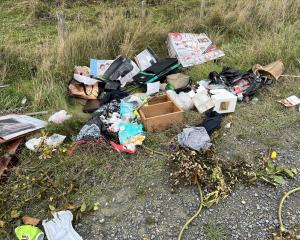
The Otago Regional Council recently endorsed Otago’s first catchment action plan, which provides a non-regulatory framework for overseeing conservation efforts in the Catlins.
The plan was formulated by the Catlins Integrated Catchment Group and an ORC working group chaired by Cr Lloyd McCall.
Cr McCall said the plan was highly collaborative, and represented substantial time and effort on the part of all stakeholders in the area, from farmers to mana whenua.
It would be monitored and reviewed regularly to allow new information to be included, making it a "living" plan, Cr McCall said.
"It acknowledges that protecting and enhancing environmental values can also benefit the social, economic and cultural wellbeing of Catlins people and visitors — ka ora te whenua, ka ora te tāngata; when the land is well, we are well."
He said the plan integrated the good work that was already taking place in the Catlins.
"The plan builds on the work that mana whenua, communities and local government are already doing to protect and manage their place and serves as a focus for new actions and projects."
It centred on six environmental values representing the area’s major ecosystems, and native species and habitats within them.
The plan also outlined the "pressures" or human activities which affected the six values, such as run-off, invasive introduced plants and mammals, and land clearing, Cr McCall said.
The council would provide $100,000 seed funding for activities falling under the new framework.
"It’s important to note that the plan reflects the current concerns of the Catlins’ mana whenua and community and is based on current available knowledge. The plan provides the basis and the beginning of a suite of actions that will continue and evolve as we gain more knowledge.
"Seven strategies have been developed to address the pressures identified, aimed at introduced mammals and birds, weeds, fish interaction, over-harvesting, sustainable farming, sustainable forestry and human behaviours."
Catlins Integrated Catchment Group chairman Grant Bradfield said creating the plan had been both "challenging and rewarding".
"The Catlins has not just a natural beauty but contains a diverse array of landscapes, waterways, native fauna and wildlife. Consequently, the resulting plan is complex, but it fairly reflects the environmental challenges of the area.
"Our hope is that this plan will be used to protect and enhance this wonderful place that we have been blessed with."












